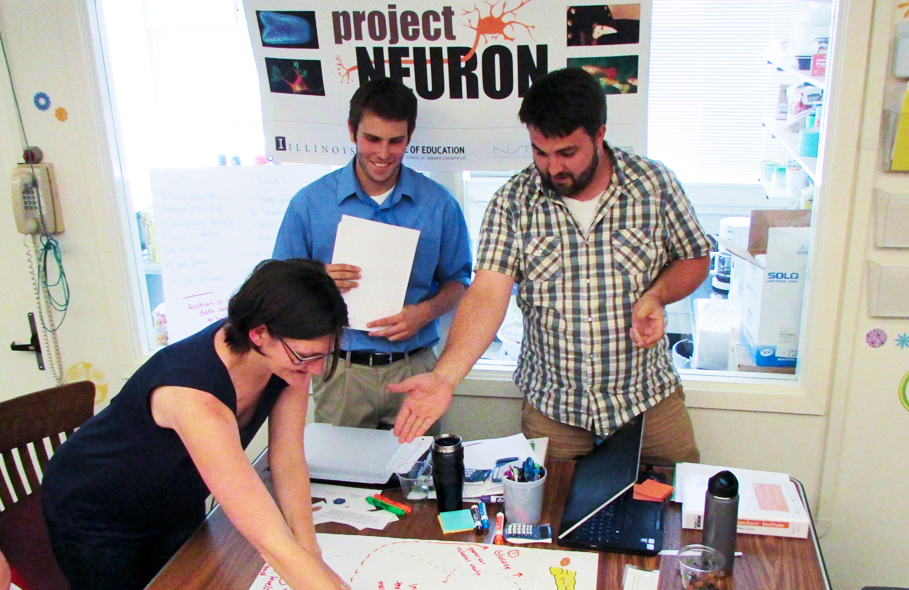NEURON projects allow students to create real-world curriculum
by the College of Education at Illinois / Apr 11, 2016

Next Generation Science Standards are being adopted nationwide, and teachers need models that align with the intent of these criterions.
Enter Project NEURON (Novel Education for Understanding Research on Neuroscience), a National Institutes of Health SEPA-funded professional development and research project in the Department of Curriculum & Instruction that creates curriculum materials for science teachers in middle school and high school.
Tommy Wolfe, Ed.M. ’14 C&I, was a part of NEURON for two years, doing curriculum development in partnership with neuroscience graduate student Claire Scavuzzo. The duo’s unit, which was called “Food for Thought: What Fuels Us?,” focused on glucose and its role in the brain and body. Wolfe now teaches honors biology and college prep physics at Adlai E. Stevenson High School in Lincolnshire, Illinois, and has integrated his research at NEURON—research he said that never truly ends— with his current lesson plans.
“It helped a lot,” Wolfe said of the research he did in Project NEURON. “The thing I loved about NEURON is that you immersed yourself in education. You were no longer working with theories—you were creating materials and employing them to see how they worked in the classroom.”
"You were no longer working with theories—you were creating materials and employing them to see how they worked in the classroom."
- Tommy Wolfe
Wolfe added that he now has the learning tools to explore different ideas and theories in education and can teach accordingly.
Each NEURON unit addresses science education standards within the context of neuroscience topics and research performed by scholars at the University of Illinois at Urbana-Champaign. The completed materials, which are available on the NEURON website free of charge for teachers and educators, have been tested in the classroom and vetted thoroughly.
Teachers can also engage with NEURON materials in a hands-on way through professional development opportunities such as workshops and national teaching conferences.
Wolfe was introduced to NEURON through Barbara Hug, a clinical associate professor in Curriculum & Instruction. The two met in a reading seminar course, and Hug was immediately impressed with Tommy’s thoughts on science and interest in student thinking even prior to being admitted in the teacher education program. He was creative, enthusiastic, and willing to think outside the box and follow through on ideas.
“Tommy brought a lot to NEURON. We all enjoyed working with him,” she said.
While in the NEURON program as a research assistant, Wolfe was able to work with scientists and teachers while developing materials in ways that most preservice teachers don’t have the opportunity to do. His curriculum unit went through multiple revisions that were informed by classroom enactments he participated in. Meanwhile, he led local teacher institutes and presented at national conferences where he conducted workshops and conveyed his NEURON unit to a broad range of teachers.
Wolfe said the work he did in NEURON was the perfect balance of guidance and exploration.
“I give a lot of credit to Barbara for Project NEURON,” Wolfe said. “She was a terrific colleague in terms of really giving great pointers, but she also gave me creative freedom in terms of learning on my own.”
Hug said she strives to create an environment within NEURON in which students see the value of what they’re participating in. She encourages projects that are developed through a lens of teamwork and interest by everyone involved.
“I have been extremely lucky with everyone who has been part of NEURON. They have been motivated and willing to work in a collaborative, creative environment,” she said.